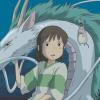The word “Bonsai” needs no translation. It is renowned internationally as a beautiful form of art which condenses nature into enjoyable little plants.
Recently, exports around the world of these little trees have increased by leaps and bounds. Hugely popular across Asia, Europe, and America, Bonsai exports to these areas have hit a record high, 10 times what they were only ten years ago. With the onset of autumn, as exports reach full-scale, people who work in the bonsai business hope that bonsai can regain some of its popularity domestically as well.
At the end of September, bonsai farmer Mr. Yamachi (60) welcomed Mr. Remo (37), a Swiss IT engineer from Zürich to his bonsai garden in Kokubunji cho in Takamatsu. Takamatsu is famous for the pine bonsai and accounts for 80% of Japan’s pine bonsai production.
Mr. Remo has lived for a year in the Kanto region with his Japanese wife and family and has been a bonsai virtuoso for 13 years. In the past, Mr. Yamachi sent Mr. Remo his Satsuki, dwarf azalea, and Mr. Remo visited Mr. Yamachi when on a trip to Japan, hoping to learn more about bonsai from him. After speaking in-depth with Mr. Yamachi about bonsai, Mr Remo commented adamantly on the charm of bonsai, how it was a bringing together of natural characteristics into a compact loveliness.
According to the Japan Trade Organization, JETRO, Bonsai export sales of 2001 amounted to a total of 640 million yen, or $8 million US. Last year’s sales totaled a record 670 million yen, amounting to $8 million 375 thousand US.
The biggest buyers of bonsai include China, Italy, and America. The Asian market spends a lot of money to acquire the prestige attached to buying bonsai as they are a status symbol there. In Europe there is a trend towards using the simplistic beauty of bonsai for interior decorating. The popularization of Japanese bonsai as an art form is spreading around the world.
At the 11th annual Asia-Pacific Bonsai and Suiseki Convention, held last November in Takamatsu, Japan, 76 thousand people from over 30 countries came to purchase and learn more about bonsai, a testimony to the bonsai boom taking place. This September Mr. Yamachi was invited to France to share and direct people in his bonsai techniques. He commented that people overseas have the passion to acquire better and better bonsai.
In response to the rising popularity of bonsai abroad, Kagawa prefecture have increased the numbers of bonsai dealers, who meet the standards for exporting bonsai from 10 to 15. Through the effects of international bonsai exhibitions, sales of bonsai have reached over 10 thousand to date, and at this rate are easily expected to exceed last years total of 12 thousand. To assist in the expansion of the international market, JETRO along with Kagawa are planning a business meeting with European gardening contractors within the year.
While the international bonsai market is expanding, interest on a domestic level is waning. This could be due to Japan’s diversified interests of forging ahead with new things and changes in the living environment of the country. Japan’s Bonsai Association has dwindled from its peak of 30 thousand members nationwide of a few decades ago, to only 7 thousand at present.
Mr. Yamachi declared with hope, “We are proud of our bonsai technique. In order to show the world a high quality bonsai the domestic market should regain some of its vitality.” Meanwhile bonsai continue to be deeply appreciated outside of Japan.
Source&Photo: SankeiBiz

 Check out these super-ultra-teeny-tiny bonsai! 【Photos】
Check out these super-ultra-teeny-tiny bonsai! 【Photos】 Tiramisu soil and a moss parfait: We dig into bonsai treats at Tokyu Hands Cafe
Tiramisu soil and a moss parfait: We dig into bonsai treats at Tokyu Hands Cafe Real dry bonsai trees coming to Japanese capsule toy vending machines【Photos】
Real dry bonsai trees coming to Japanese capsule toy vending machines【Photos】 You can eat bonsai trees? Sure, if they’re made of chocolate like this DIY kit【Video】
You can eat bonsai trees? Sure, if they’re made of chocolate like this DIY kit【Video】 Bonsai treehouses look like something out of Howl’s Moving Castle 【Photos】
Bonsai treehouses look like something out of Howl’s Moving Castle 【Photos】 Foreigner’s request for help in Tokyo makes us sad for the state of society
Foreigner’s request for help in Tokyo makes us sad for the state of society Japanese city loses residents’ personal data, which was on paper being transported on a windy day
Japanese city loses residents’ personal data, which was on paper being transported on a windy day Ghibli Park now selling “Grilled Frogs” from food cart in Valley of Witches
Ghibli Park now selling “Grilled Frogs” from food cart in Valley of Witches Historical figures get manga makeovers from artists of Spy x Family, My Hero Academia and more
Historical figures get manga makeovers from artists of Spy x Family, My Hero Academia and more Osaka governor suggests lowering voting age to 0 to curb population decline
Osaka governor suggests lowering voting age to 0 to curb population decline Should you add tartar sauce to Japanese curry rice? CoCo Ichi makes diners an unusual offer
Should you add tartar sauce to Japanese curry rice? CoCo Ichi makes diners an unusual offer Smash Bros. director Sakurai stabs Kirby in the face, has delicious justification for it
Smash Bros. director Sakurai stabs Kirby in the face, has delicious justification for it Haku is…Chihiro’s dead brother? Studio Ghibli fans blown away by Spirited Away theory
Haku is…Chihiro’s dead brother? Studio Ghibli fans blown away by Spirited Away theory Mt. Koya planning to instate visitor’s tax to cope with huge tourist numbers
Mt. Koya planning to instate visitor’s tax to cope with huge tourist numbers Japanese ramen restaurants under pressure from new yen banknotes
Japanese ramen restaurants under pressure from new yen banknotes McDonald’s new Happy Meals offer up cute and practical Sanrio lifestyle goods
McDonald’s new Happy Meals offer up cute and practical Sanrio lifestyle goods French Fries Bread in Tokyo’s Shibuya becomes a hit on social media
French Fries Bread in Tokyo’s Shibuya becomes a hit on social media Studio Ghibli releases new action figures featuring Nausicaä of the Valley of the Wind characters
Studio Ghibli releases new action figures featuring Nausicaä of the Valley of the Wind characters New private rooms on Tokaido Shinkansen change the way we travel from Tokyo to Kyoto
New private rooms on Tokaido Shinkansen change the way we travel from Tokyo to Kyoto Red light district sushi restaurant in Tokyo shows us just how wrong we were about it
Red light district sushi restaurant in Tokyo shows us just how wrong we were about it Tokyo Tsukiji fish market site to be redeveloped with 50,000-seat stadium, hotel, shopping center
Tokyo Tsukiji fish market site to be redeveloped with 50,000-seat stadium, hotel, shopping center All-you-can-drink Starbucks and amazing views part of Tokyo’s new 170 meter-high sky lounge
All-you-can-drink Starbucks and amazing views part of Tokyo’s new 170 meter-high sky lounge Beautiful Ghibli sealing wax kits let you create accessories and elegant letter decorations【Pics】
Beautiful Ghibli sealing wax kits let you create accessories and elegant letter decorations【Pics】 Studio Ghibli releases Kiki’s Delivery Service chocolate cake pouches in Japan
Studio Ghibli releases Kiki’s Delivery Service chocolate cake pouches in Japan New definition of “Japanese whiskey” goes into effect to prevent fakes from fooling overseas buyers
New definition of “Japanese whiskey” goes into effect to prevent fakes from fooling overseas buyers Our Japanese reporter visits Costco in the U.S., finds super American and very Japanese things
Our Japanese reporter visits Costco in the U.S., finds super American and very Japanese things Studio Ghibli unveils Mother’s Day gift set that captures the love in My Neighbour Totoro
Studio Ghibli unveils Mother’s Day gift set that captures the love in My Neighbour Totoro More foreign tourists than ever before in history visited Japan last month
More foreign tourists than ever before in history visited Japan last month New Pokémon cakes let you eat your way through Pikachu and all the Eevee evolutions
New Pokémon cakes let you eat your way through Pikachu and all the Eevee evolutions Sales of Japan’s most convenient train ticket/shopping payment cards suspended indefinitely
Sales of Japan’s most convenient train ticket/shopping payment cards suspended indefinitely Sold-out Studio Ghibli desktop humidifiers are back so Totoro can help you through the dry season
Sold-out Studio Ghibli desktop humidifiers are back so Totoro can help you through the dry season Japanese government to make first change to romanization spelling rules since the 1950s
Japanese government to make first change to romanization spelling rules since the 1950s Ghibli founders Toshio Suzuki and Hayao Miyazaki contribute to Japanese whisky Totoro label design
Ghibli founders Toshio Suzuki and Hayao Miyazaki contribute to Japanese whisky Totoro label design Doraemon found buried at sea as scene from 1993 anime becomes real life【Photos】
Doraemon found buried at sea as scene from 1993 anime becomes real life【Photos】 Tokyo’s most famous Starbucks is closed
Tokyo’s most famous Starbucks is closed One Piece characters’ nationalities revealed, but fans have mixed opinions
One Piece characters’ nationalities revealed, but fans have mixed opinions We asked a Uniqlo employee what four things we should buy and their suggestions didn’t disappoint
We asked a Uniqlo employee what four things we should buy and their suggestions didn’t disappoint Princesses, fruits, and blacksmiths: Study reveals the 30 most unusual family names in Japan
Princesses, fruits, and blacksmiths: Study reveals the 30 most unusual family names in Japan Japanese bonsai trees made from paper stay beautiful without water or pruning
Japanese bonsai trees made from paper stay beautiful without water or pruning Daiso releases shoulder bag series for every prefecture in Japan with surprising trivia facts
Daiso releases shoulder bag series for every prefecture in Japan with surprising trivia facts Customizable minimalistic plastic bonsai trees let you enjoy zen gardening without all the fuss
Customizable minimalistic plastic bonsai trees let you enjoy zen gardening without all the fuss Bonrama combines Japanese bonsai-style scenery and railroad tracks to spiff up your room
Bonrama combines Japanese bonsai-style scenery and railroad tracks to spiff up your room Japanese tourist cries tears of joy over creative installation of origami in the UK
Japanese tourist cries tears of joy over creative installation of origami in the UK An adorably awesome use for Japan’s mini rice cooker capsule toys: Pet bird feeders!【Video】
An adorably awesome use for Japan’s mini rice cooker capsule toys: Pet bird feeders!【Video】 Lego’s new Botanical Collection opens up a world of permanent petal play for stressed adults
Lego’s new Botanical Collection opens up a world of permanent petal play for stressed adults Mr Sato tries the gorgeous new bonsai parfait that everyone’s talking about in Harajuku
Mr Sato tries the gorgeous new bonsai parfait that everyone’s talking about in Harajuku Matcha parfait looks like a Japanese zen garden, hides a treasure trove of secret surprises
Matcha parfait looks like a Japanese zen garden, hides a treasure trove of secret surprises Origami and bonsai combine in gorgeous handmade creations from Japanese artist【Photos】
Origami and bonsai combine in gorgeous handmade creations from Japanese artist【Photos】 A tiny coffee stand in Japan is selling some of the most lifelike gummy bugs we’ve ever seen
A tiny coffee stand in Japan is selling some of the most lifelike gummy bugs we’ve ever seen Golden Japanese toilet appears at “multi-millionaire” izakaya in Tokyo
Golden Japanese toilet appears at “multi-millionaire” izakaya in Tokyo The strange and funny nicknames Chinese netizens have given Western celebrities【Video】
The strange and funny nicknames Chinese netizens have given Western celebrities【Video】 These beautiful pieces of sushi aren’t actually sushi
These beautiful pieces of sushi aren’t actually sushi We try epic pancakes at Japanese coffeehouse chain Doutor
We try epic pancakes at Japanese coffeehouse chain Doutor
Leave a Reply